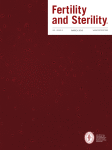
Authors:
Paula Intasqui, M.Sc.a, Mariana Camargo, M.Sc.a, Mariana Pereira Antoniassi, M.Sc.a, Agnaldo Pereira Cedenho, M.D., Ph.D.a, Valdemir Melechco Carvalho, Ph.D.b, Karina Helena Morais Cardozo, Ph.D.b, Daniel Suslik Zylbersztejn, M.D., Ph.D.a, c, Ricardo Pimenta Bertolla, Ph.D.a,
Abstract:
Objective
To analyze the seminal plasma proteome and biological functions associated with sperm functional alterations.
Design
Cross-sectional study.
Setting
University andrology and research laboratories.
Patient(s)
A total of 156 normozoospermic men.
Intervention(s)
Sperm mitochondrial activity, acrosome integrity, and DNA fragmentation were evaluated in a semen aliquot. Remaining semen was centrifuged, and seminal plasma was utilized for proteomic analysis (liquid chromatography–tandem mass spectrometry). Patients were divided into percentiles (15%) to form the following groups: substudy 1, high (control, n = 26) and low (study, n = 23) sperm mitochondrial activity; substudy 2, high (control, n = 23) and low (study, n = 22) sperm acrosome integrity; and substudy 3, low (control, n = 22) and high (study, n = 22) sperm DNA fragmentation. Groups were compared using univariate and multivariate analyses. Differentially expressed proteins were used for functional enrichment analysis.
Main Outcome Measure(s)
Seminal plasma proteome and postgenomic pathways are associated with several sperm functional traits.
Result(s)
In total, 506, 493, and 464 proteins were observed in substudies 1, 2, and 3, respectively. Enriched functions in substudy 1 were intramolecular oxidoreductase activity, aminoglycans catabolism, endopeptidases inhibition, lysosomes, and acute-phase response (study group). In substudy 2, main enriched functions were phospholipase inhibition, arachidonic acid metabolism, exocytosis, regulation of acute inflammation, response to hydrogen peroxide, and lysosomal transport (study group). In substudy 3, enriched functions were prostaglandin biosynthesis and fatty acid binding (study group). We proposed eight, six, and eight seminal biomarkers for substudies 1, 2, and 3, respectively.
Conclusion(s)
Seminal plasma proteome reflects sperm mitochondrial activity reduction, acrosome damage, and DNA fragmentation, with several postgenomic functions related to these alterations.